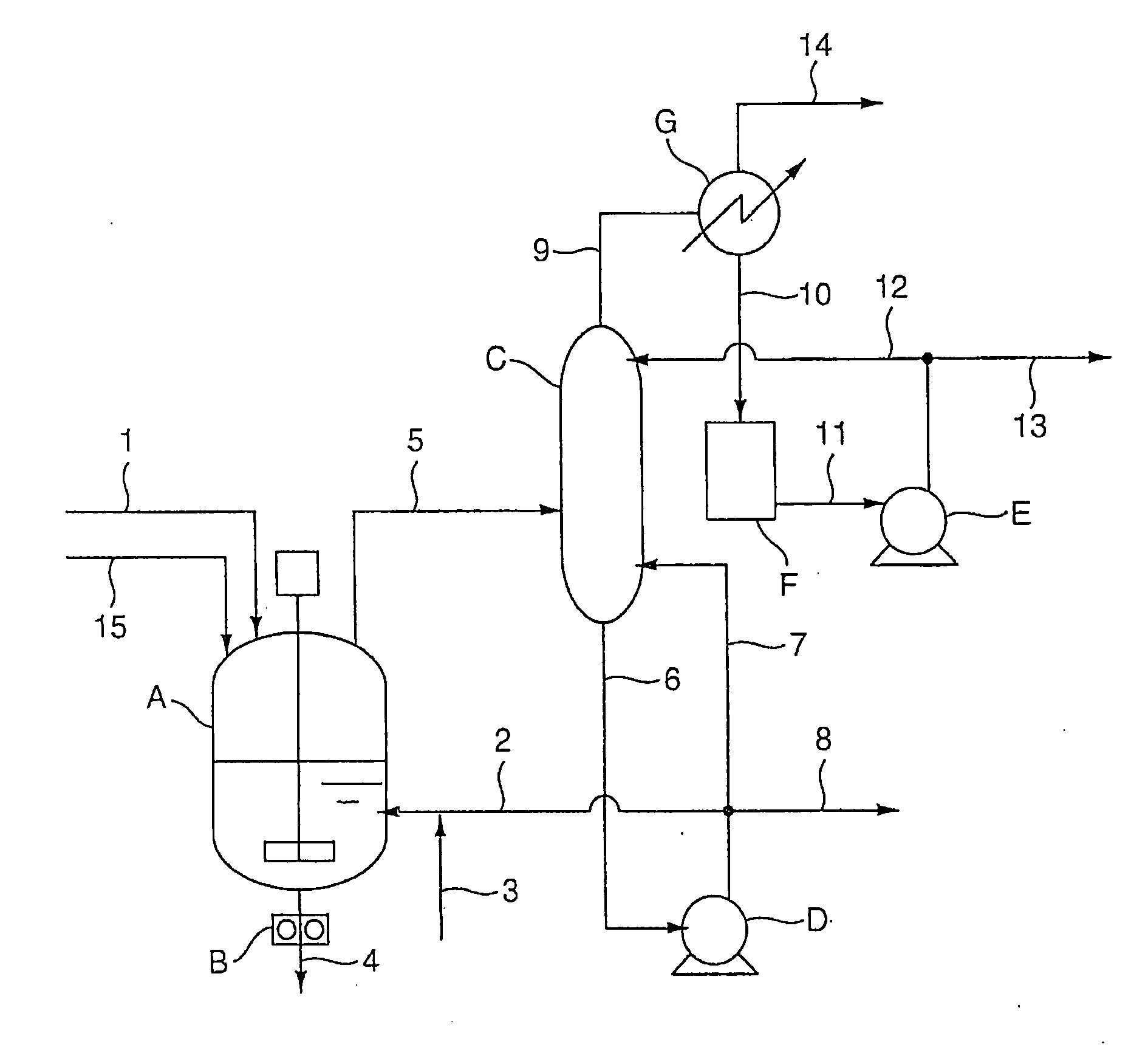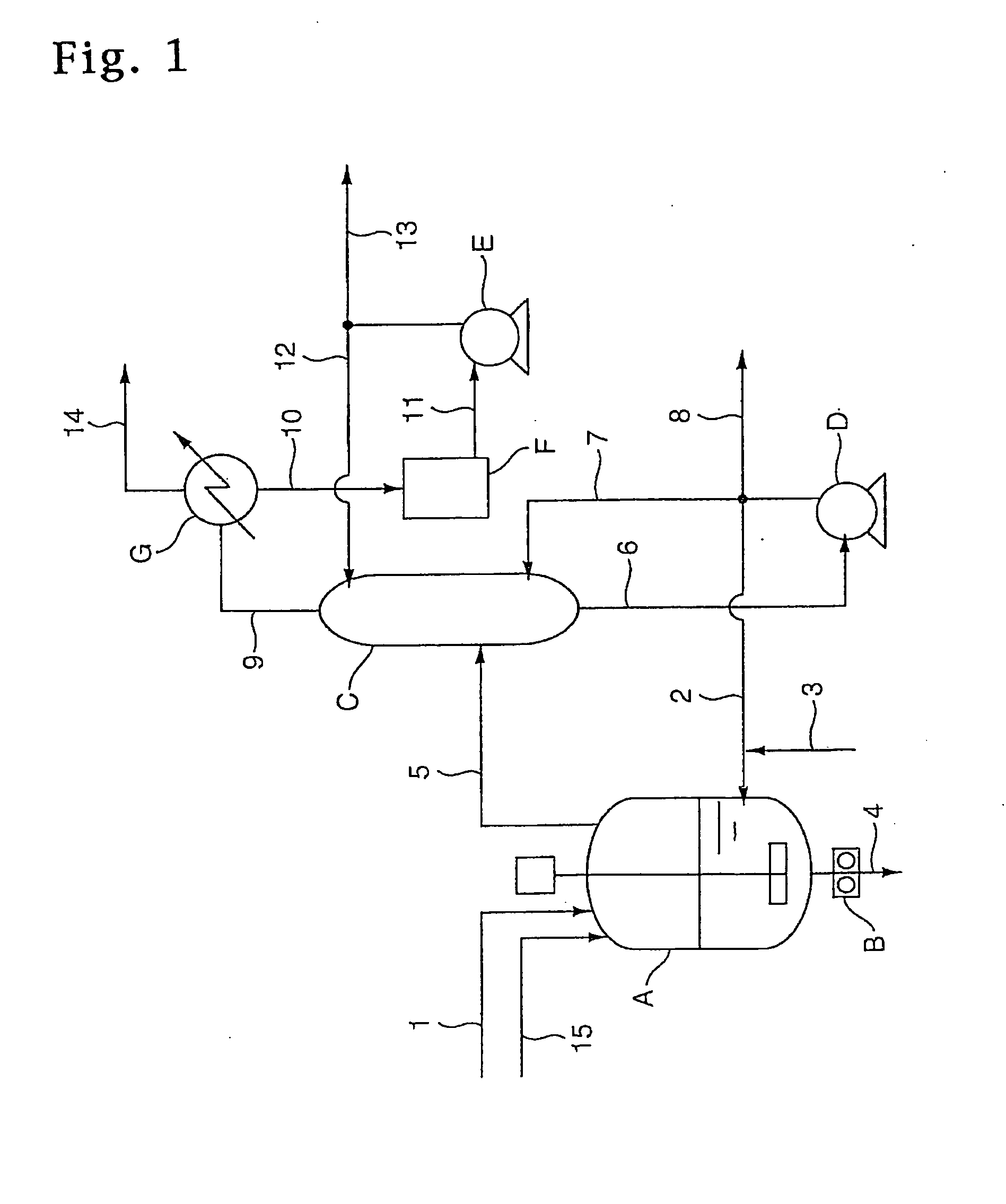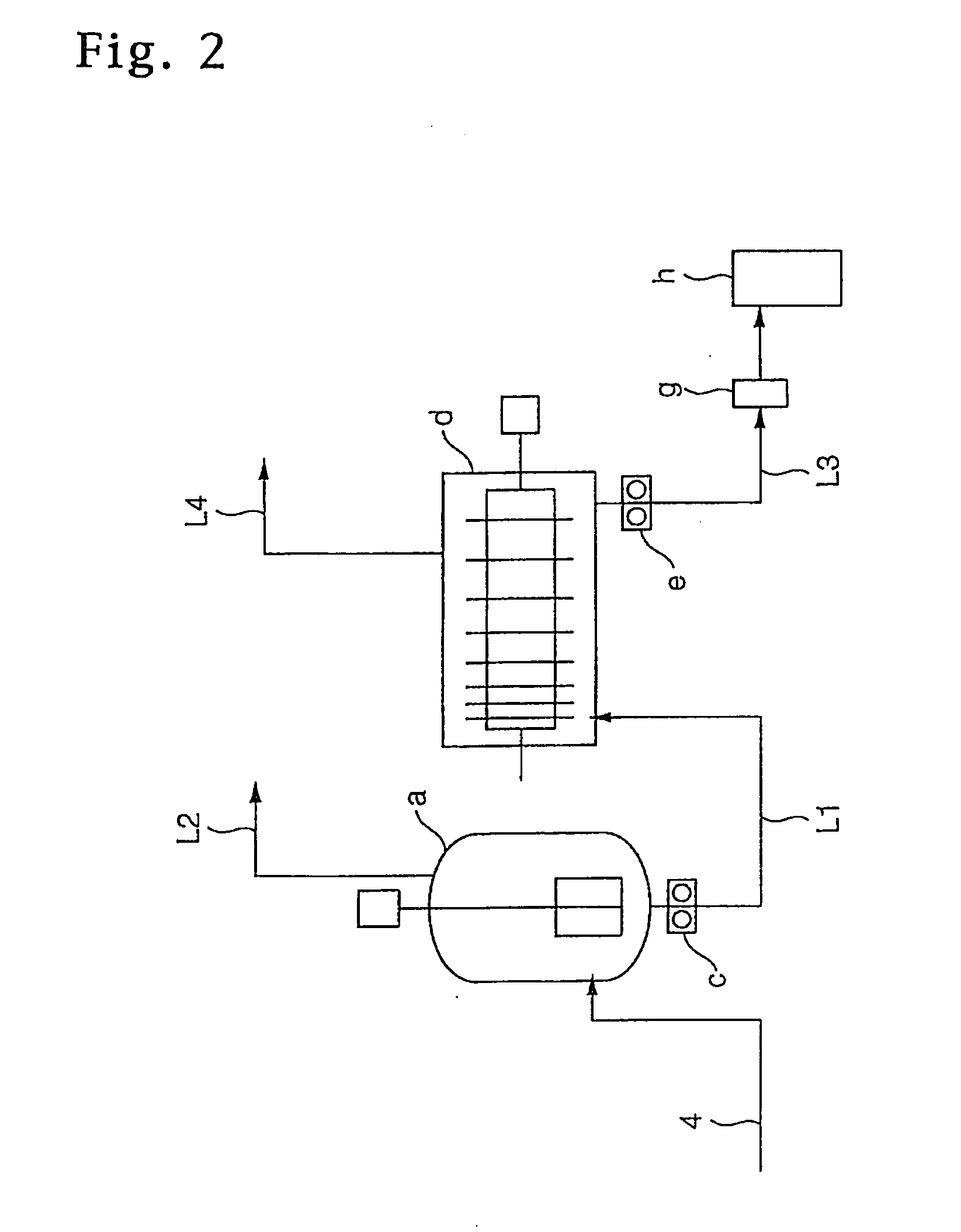Polybutylene terephthalate
a technology of polybutylene terephthalate and polybutylene terephthalate, which is applied in the field of polybutylene terephthalate, can solve the problems of deterioration in mechanical properties, insufficient hydrolysis resistance of polybutylene terephthalate, and mechanical properties deterioration, and achieves excellent color tone, hydrolysis resistance, heat stability and moldability. the effect of less impurity conten
- Summary
- Abstract
- Description
- Claims
- Application Information
AI Technical Summary
Benefits of technology
Problems solved by technology
Method used
Image
Examples
example 1
[0134]PBT was produced through the esterification process shown in FIG. 1 and the polycondensation process shown in FIG. 2 by the following procedure. First, terephthalic acid was mixed with 1,4-butanediol at 60° C. at a molar ratio of 1.00:1.80 in a slurry preparation tank. The thus obtained slurry was continuously supplied at a feed rate of 41 kg / h from the slurry preparation tank through a raw material feed line (1) to an esterification reaction vessel (A) equipped with a screw-type stirrer which was previously filled with PBT oligomer having an esterification conversion of 99%. Simultaneously, a bottom component of a rectifying column (C) at 185° C. (which contained 1,4-butanediol in an amount of not less than 98% by weight) was supplied at a feed rate of 20 kg / h through a recirculation line (2) to the reaction vessel (A), and further a 6.0 wt % 1,4-butanediol solution of tetrabutyl titanate as a catalyst at 65° C. was supplied through a titanium catalyst feed line (3) to the re...
example 2
[0141]The same procedure as defined in Example 1 was conducted except that the residence time in the second polycondensation reaction vessel (d) was changed to 90 min, and the polycondensation process was omitted. The analyzed values of the obtained PBT are shown together in Table 1.
example 3
[0142]The same procedure as defined in Example 2 was conducted except that the amounts of tetrabutyl titanate and magnesium acetate tetrahydrate fed were controlled such that the resultant polymer had the titanium content and the magnesium content as shown in Table 1, and the residence time in the second polycondensation reaction vessel (d) was changed to 75 min. The analyzed values of the obtained PBT are shown together in Table 1.
PUM
| Property | Measurement | Unit |
|---|---|---|
| crystallization temperature | aaaaa | aaaaa |
| intrinsic viscosity | aaaaa | aaaaa |
| concentration | aaaaa | aaaaa |
Abstract
Description
Claims
Application Information
 Login to View More
Login to View More - R&D
- Intellectual Property
- Life Sciences
- Materials
- Tech Scout
- Unparalleled Data Quality
- Higher Quality Content
- 60% Fewer Hallucinations
Browse by: Latest US Patents, China's latest patents, Technical Efficacy Thesaurus, Application Domain, Technology Topic, Popular Technical Reports.
© 2025 PatSnap. All rights reserved.Legal|Privacy policy|Modern Slavery Act Transparency Statement|Sitemap|About US| Contact US: help@patsnap.com



